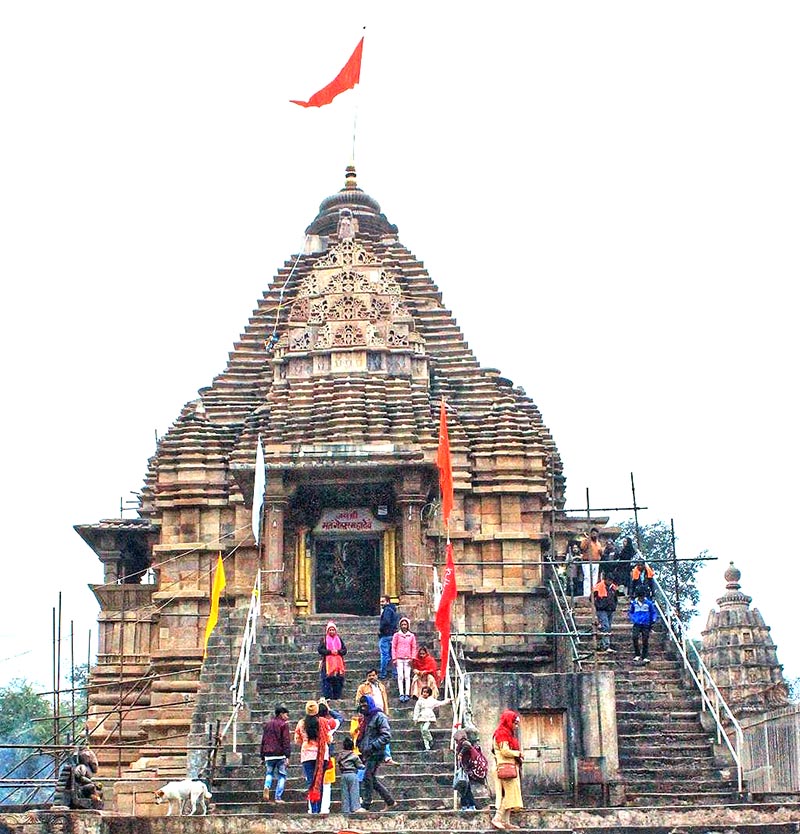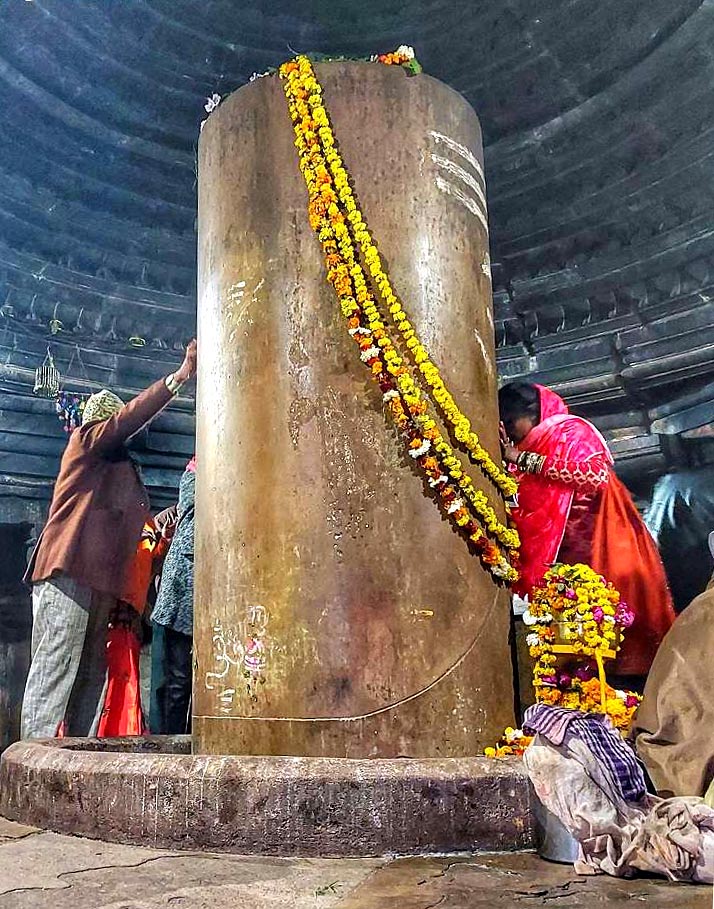
Nestled in the historic town of Khajuraho, Madhya Pradesh, the Matangeshwar Temple stands as a testament to India’s rich spiritual and cultural heritage. This ancient temple, dedicated to Lord Shiva, is not just a site of religious significance but also an architectural marvel. Whether you’re a history enthusiast, an art lover, or a spiritual seeker, a visit to Matangeshwar Temple promises a captivating experience.
It is a UNESCO World Heritage site and the present temple belons to the 900 CE period.
The Matangeshwar Temple is enveloped in a captivating mystery associated with its Shivalingam. According to local legends and myths, the Shivling at Matangeshwar Shiva Temple in Khajuraho is a Shivling that grows year after year. This intriguing phenomenon is said to occur inch by inch annually. Shivling is It has a square plan. It houses a 2.5 m high lingam which is 1.1 m in diameter. The base platform of the lingam is 1.2 m high and 7.6 m in diameter. The lingam has Nagari and Persian inscriptions.

This bi-directional expansion of the Shivling is a source of wonder and devotion for many. It is said that Lord Shiva, pleased with Yudhishthira, the eldest of the Pandava brothers, gifted him a precious and magical stone called Markand Mani. Yudhishthira later entrusted this valuable stone to a saint named Matanga Rishi, who then handed it over to King Harshavardhan for safekeeping. Fearing for its safety, Harshavardhan decided to bury the Markand Mani underground.
Miraculously, a Shivling formed around the buried Markand Mani. Due to the mystical powers of this stone, the Shivling began to grow year after year. The legend further suggests that the top of the Shivling is reaching towards the heavens, while its base is extending towards Patal Lok. It is believed that once the base of the Shivling reaches Patal Lok, Kali Yuga will come to an end.
The present Matangeshwar Temple is one of the oldest temples in Khajuraho, dating back to the 10th century during the reign of the Chandela dynasty. This period marks the early phase of temple architecture in Khajuraho, with the Matangeshwar Temple being a prime example. Unlike many of the other temples in the region that are famed for their ornate sculptures, the Matangeshwar Temple holds a special place, as it is still actively used for worship.
The architectural brilliance of the Matangeshwar Temple is a sight to behold. Inside, the temple houses a massive Shivalingam and Yonipitham, with the Shivalingam being particularly notable for its well-polished surface. On the body of the lingam are two Persian and several Nagari epigraphs, adding a layer of historical and linguistic interest to the site. Devotees perform Pradakshina (circumambulation) by walking around the Yonipitham, following ancient traditions.
The temple’s ceiling is an architectural marvel, formed of concentric rings overlapping each other, resting on an octagonal base. This design is supported by four pairs of pillars, placed one in each of the four openings. Interestingly, the four pillars in the corners were not part of the original design but were added later to support cracked lintels of the ceiling, indicating that the temple was preserved by later dynasties.
From its design and development, it is evident that the Matangeshwar Temple is one of the earliest temples in Khajuraho, assignable to around the 10th century. Its preservation and continued use highlight its enduring significance in the spiritual and cultural landscape of Khajuraho.
Timing of Matangeshwar Temple
The Matangeshwar Temple is open to visitors from sunrise to sunset. It is advisable to visit early in the morning or late in the afternoon to avoid the midday heat and experience the temple in a more serene and peaceful setting.
How to Reach
Khajuraho is well-connected by air, rail, and road. The Khajuraho Airport has regular flights from major cities like Delhi and Varanasi. The Khajuraho Railway Station connects the town with several important cities. Buses and taxis are readily available for road travel, making it easy to reach the temple from various parts of the region.











